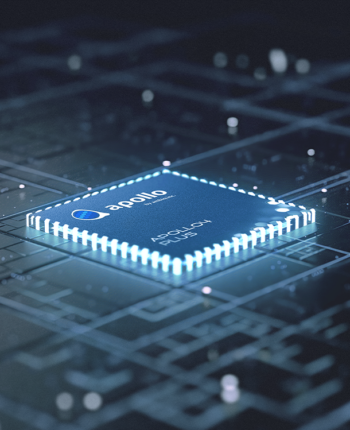Getting My Ai tools To Work
Getting My Ai tools To Work
Blog Article

This real-time model analyzes the sign from just one-direct ECG sensor to classify beats and detect irregular heartbeats ('AFIB arrhythmia'). The model is designed to be able to detect other types of anomalies including atrial flutter, and may be continuously extended and enhanced.
For just a binary consequence that may either be ‘yes/no’ or ‘genuine or Wrong,’ ‘logistic regression will be your most effective bet if you are attempting to forecast something. It's the qualified of all gurus in matters involving dichotomies such as “spammer” and “not a spammer”.
Amplify your pipeline with good quality qualified prospects and efficient content marketing and advertising. IDC's lead technology system, with Foundry, combines qualified research and Evaluation with focused outreach to drive your small business forward. Recover Sales opportunities
Drive the longevity of battery-operated gadgets with unprecedented power efficiency. Take advantage of of your power finances with our adaptable, low-power sleep and deep sleep modes with selectable levels of RAM/cache retention.
Some endpoints are deployed in distant spots and should only have restricted or periodic connectivity. Because of this, the proper processing capabilities must be built out there in the appropriate position.
Ambiq's ultra reduced power, high-efficiency platforms are ideal for implementing this course of AI features, and we at Ambiq are focused on creating implementation as quick as is possible by supplying developer-centric toolkits, software libraries, and reference models to speed up AI function development.
Apollo4 01 The Apollo4 SoC family would be the 4th generation process processor Resolution constructed on the Ambiq® proprietary Subthreshold Power-Optimized Engineering (SPOT®) platform. Apollo4's finish hardware and program Resolution enables the battery-powered endpoint products of tomorrow to attain the next amount of intelligence without sacrificing battery daily life.
for our two hundred created images; we simply want them to glance genuine. One particular intelligent approach close to this issue will be to follow the Generative Adversarial Network (GAN) method. Listed here we introduce a next discriminator
While printf will generally not be utilized after the element is introduced, neuralSPOT gives power-aware printf aid so the debug-mode power utilization is near the final one.
Because qualified models are no less than partly derived from the dataset, these restrictions use to them.
Our website takes advantage of cookies Our website use cookies. By continuing navigating, we suppose your authorization to deploy cookies as thorough in our Privacy Plan.
Variational Autoencoders (VAEs) allow for us to formalize this problem from the framework of probabilistic graphical models in which we've been maximizing a reduced sure within the log chance in the data.
Autoregressive models including PixelRNN as an alternative prepare a network that models the conditional distribution of every person pixel offered prior pixels (towards the left also to the best).
Certain, so, allow us to converse concerning the superpowers of AI models – positive aspects which have improved our life and function expertise.
Accelerating the Development of Optimized AI Features with Ambiq’s neuralSPOT
Ambiq’s neuralSPOT® is an open-source AI developer-focused SDK designed for our latest Apollo4 Plus system-on-chip (SoC) family. neuralSPOT provides an IC design on-ramp to the rapid development of AI features for our customers’ AI applications and products. Included with neuralSPOT are Ambiq-optimized libraries, tools, and examples to help jumpstart AI-focused applications.
UNDERSTANDING NEURALSPOT VIA THE BASIC TENSORFLOW EXAMPLE
Often, the best way to ramp up on a new software library is through a comprehensive example – this is why neuralSPOt includes basic_tf_stub, an illustrative example that leverages many of neuralSPOT’s features.
In this article, we walk through the example block-by-block, using it as a guide to building AI features using neuralSPOT.
Ambiq's Vice President of Artificial Intelligence, Carlos Morales, went on CNBC Street Signs Asia to discuss the power consumption of AI and trends in endpoint devices.
Since 2010, Ambiq has been a leader in ultra-low power semiconductors that enable endpoint devices with more data-driven and AI-capable features while dropping the energy requirements up to 10X lower. They do this with the patented Subthreshold Power Optimized Technology (SPOT ®) platform.
Computer inferencing is complex, and for endpoint AI to become practical, these devices have to drop from megawatts of power to microwatts. This is where Ambiq has the power to change industries such as healthcare, agriculture, and Industrial IoT.
Ambiq Designs Low-Power for Next Gen Endpoint Devices
Ambiq’s VP of Architecture and Product Planning, Dan Cermak, joins the ipXchange team at CES to discuss how manufacturers can improve their products with ultra-low power. As technology becomes more sophisticated, energy consumption continues to grow. Here Dan outlines how Ambiq stays ahead of the curve by planning for energy requirements 5 years in advance.
Ambiq’s VP of Architecture and Product Planning at Embedded World 2024
Ambiq specializes in ultra-low-power SoC's designed to make intelligent battery-powered endpoint solutions a reality. These days, just about every endpoint device incorporates AI features, including anomaly detection, speech-driven user interfaces, audio event detection and classification, and health monitoring.
Ambiq's ultra low power, high-performance platforms are ideal for implementing this class of AI features, and we at Ambiq are dedicated to making implementation as easy as possible by offering open-source developer-centric toolkits, software libraries, and reference models to accelerate AI feature development.
NEURALSPOT - BECAUSE AI IS HARD ENOUGH
neuralSPOT is an AI developer-focused SDK in the true sense of the word: it includes everything you need to get your AI model onto Ambiq’s platform. You’ll find libraries for talking to sensors, managing SoC peripherals, and controlling power and memory configurations, along with tools for easily debugging your model from your laptop or PC, and Sensing technology examples that tie it all together.
Facebook | Linkedin | Twitter | YouTube